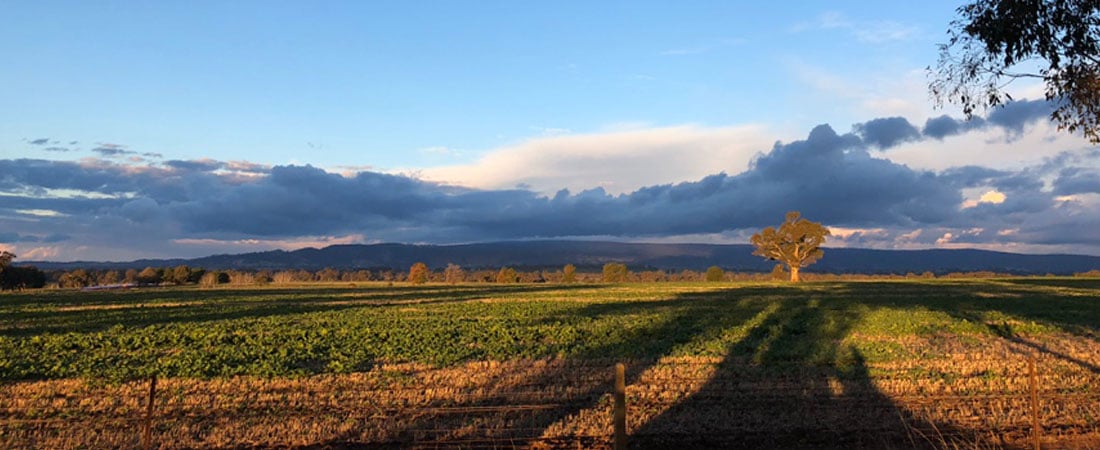After significant local opposition, the 300 MWac Walla Walla Solar Farm has become the first large-scale solar farm to be approved following the passage of the NSW Renewable Infrastructure bill through parliament on Thursday.
Situated about 40 km north of Albury-Wodonga, the $400 million solar farm is being developed by Fotowatio Renewable Ventures (FRV), which acquired the project development rights from Bison Energy in 2019.
The project was referred to the NSW Independent Planning Commission for determination “due to opposition from Greater Hume Shire Council and the local community,” an IPC statement says.
With its capacity to supply up to 90,000 NSW homes and businesses, the solar farm was considered by the IPC as part of the State Significant Development Approvals Scheme.
“Walla Walla Solar Farm is a State Significant project by definition,” said FRV Australia Managing Director Carlo Frigerio in a statement, adding, “We are very pleased we will now be able to proceed to private financing and construction.”
A comprehensive process of assessment and community consultation
The Department of Planning, Industry & the Environment finalised its whole-of-government assessment of the project in September, and Commissioners Andrew Hutton and Professor Zada Lipman subsequently met with the Council, inspected the site and held an electronic public meeting on 5 November, to listen to residents’ concerns, which the IPC says, “focused on land-use compatibility, biodiversity impacts, visual impacts on the surrounding landscape and socio-economic impacts”.
The developer has calculated that Walla Walla Solar Farm will boost the local economy by creating around 250 construction jobs, and sourcing of local services such as fencing, civil works, land management, and accommodation and hospitality.
On Friday, the IPC granted development consent, subject to certain conditions, with the commissioners being “of the view that the Project is in accordance with the [Environmental Planning and Assessment] Act and is in the public interest”.
The conditions “have been designed to prevent, minimise and/or offset adverse environmental impacts; set standards and performance measures for acceptable environmental performance,” and “outline how the land can be returned to its current use following decommissioning and rehabilitation of the site”, the IPC said.
Tarek Al Sampaile, Head of Project Development of FRV Australia, said in the company’s statement, “We have worked exceptionally hard to ensure plans for Walla Walla Solar Farm reflect a balanced and considerate design that will provide a strategically important new source of clean energy for NSW while protecting the amenity of nearby residents.”
The resource and grid context
The project will be built over 605 hectares of private land leased from two separate landowners.
The site, between the towns of Walla Walla and Culcairn, was selected for its high levels of solar radiation throughout the year.
Over the past decade of experience in the Australian market FRV says it has recognised the importance of building in the right location, in order to sustain network stability and reliability and achieve connection.
“Walla Walla Solar Farm is situated in the Albury region, in close proximity to the backbone of the NSW transmission network, capable of transferring power to and from Victoria and South Australia,” Frigerio told pv magazine today.
FRV currently has eight solar farms in operation or under construction and across the NEM, including the 125 MWp Lilyvale Solar Farm in Queensland, the 106 MWp Winton Solar Farm in Victoria, and the 125 MWp Chaff Mill Solar Farm in South Australia. It also recently acquired Metz Solar Farm which it is progressing to financial close, and secured financing for Sebastopol Solar Farm, both in NSW)
Walla Walla is its 9th solar farm that has progressed to build stage in Australia, the fourth in NSW, and its largest to date by far.
Construction of the farm with its 900,000 solar panels to be mounted on single-axis trackers, is scheduled to commence in Q1 of 2021, and will take 20 months.
But are they quality jobs as defined by the ACTU?
When asked about the training of local workforces and the security of employees of FRV, given this weekend’s report by the ACTU on poor employment outcomes in the clean energy industry, Frigerio told pv magazine that FRV “works with its contractors to offer local employment and training to qualified personnel wherever possible”.
At Winton Solar Farm, currently under construction in Victoria, he says, “we currently have 29 apprentices working onsite to gain experience and training in solar farm development and engineering”.
He adds, “Further, we are partnering with local training institutions to provide new course training pathways into longer-term employment in solar and renewable-energy services.”
This content is protected by copyright and may not be reused. If you want to cooperate with us and would like to reuse some of our content, please contact: editors@pv-magazine.com.









1 comment
By submitting this form you agree to pv magazine using your data for the purposes of publishing your comment.
Your personal data will only be disclosed or otherwise transmitted to third parties for the purposes of spam filtering or if this is necessary for technical maintenance of the website. Any other transfer to third parties will not take place unless this is justified on the basis of applicable data protection regulations or if pv magazine is legally obliged to do so.
You may revoke this consent at any time with effect for the future, in which case your personal data will be deleted immediately. Otherwise, your data will be deleted if pv magazine has processed your request or the purpose of data storage is fulfilled.
Further information on data privacy can be found in our Data Protection Policy.